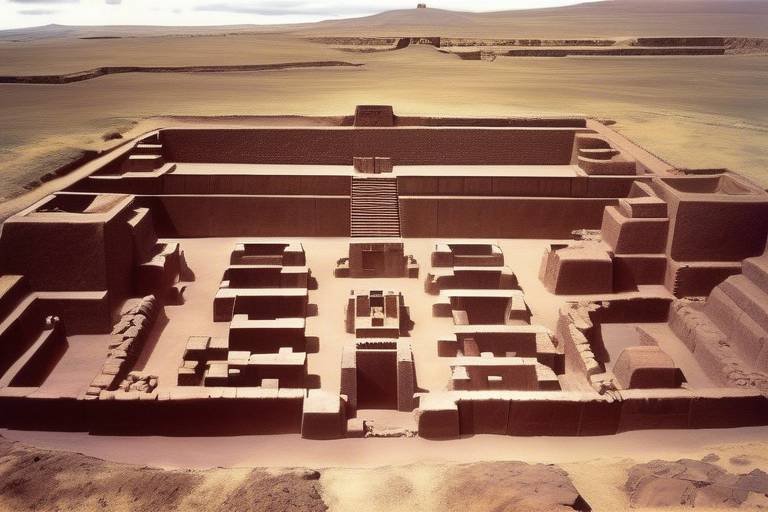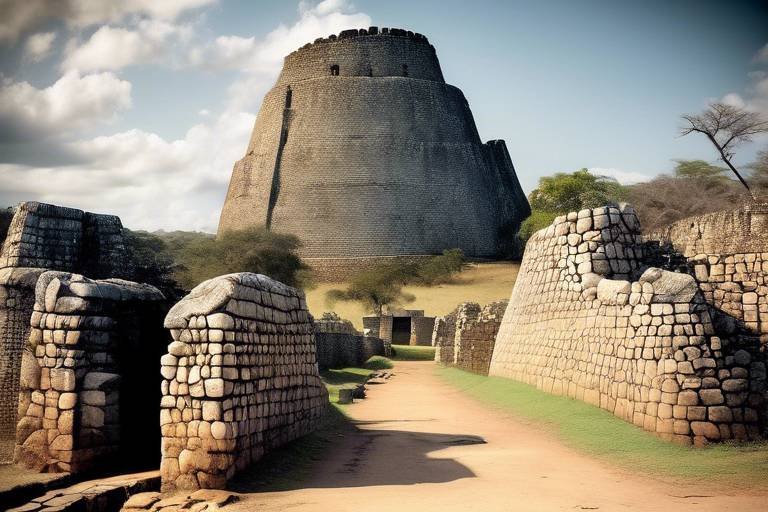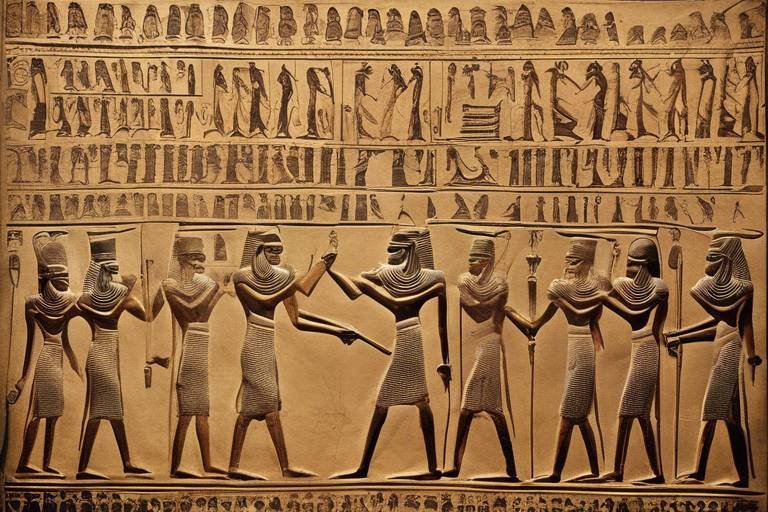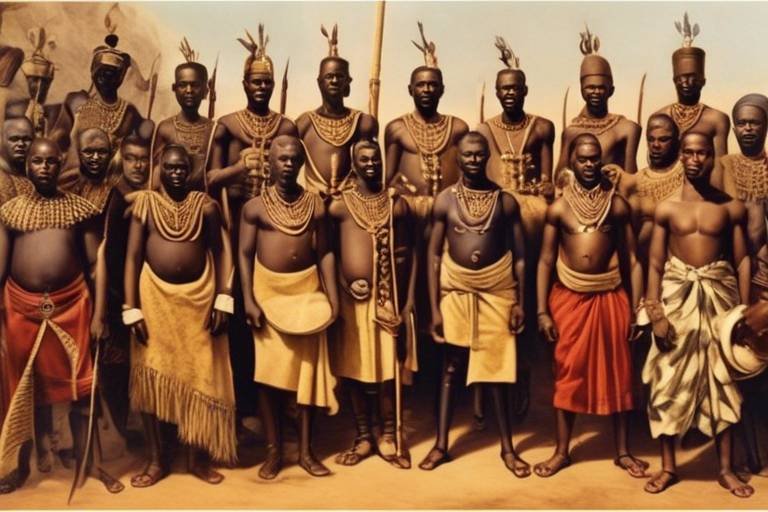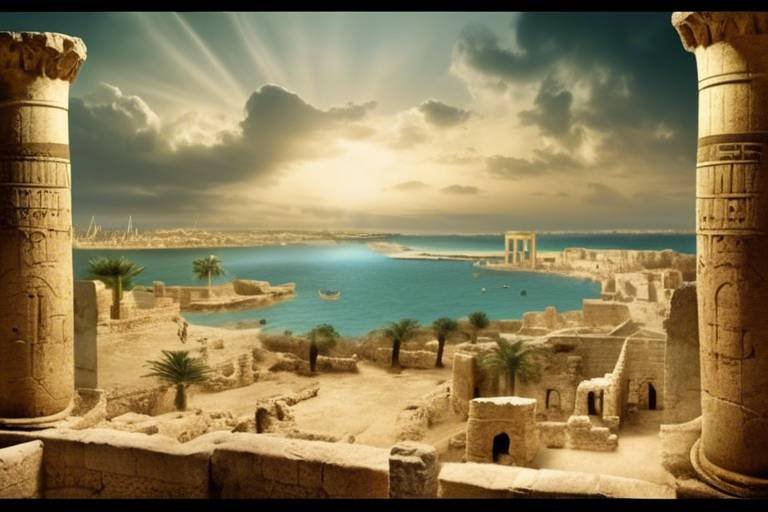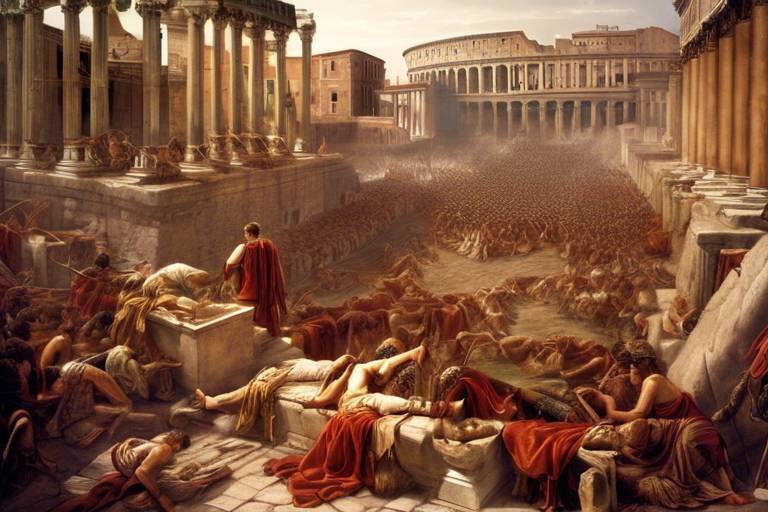The Rise and Fall of the Roman Empire - A Comprehensive Review
The Rise and Fall of the Roman Empire is a captivating tale of power, conquest, and eventual decline that has fascinated historians and enthusiasts for centuries. This ancient empire, once a symbol of strength and grandeur, rose to prominence through a series of strategic conquests and cultural achievements that left a lasting impact on the world.
Founded on the legendary story of Romulus and Remus, Rome emerged as a small city-state on the Italian peninsula, eventually evolving into a formidable empire that dominated vast territories across three continents. The early Romans were known for their military prowess, innovative engineering, and sophisticated governance system.
As Rome expanded its borders through conquest and diplomacy, it faced both internal and external challenges that tested its resilience. The political system of the Roman Republic gave way to the autocratic rule of emperors, leading to a period of stability but also paving the way for corruption and internal strife.
The Romans were not just skilled warriors but also accomplished artists, architects, and writers. Their cultural achievements, including iconic structures like the Colosseum and the Pantheon, laid the foundation for Western civilization and continue to inspire awe and admiration to this day.
However, the glory of Rome was not destined to last forever. Internal divisions, economic crises, and external invasions by barbarian tribes hastened the empire's decline. The once-mighty Roman Empire eventually split into two halves, with the Western half succumbing to the relentless attacks of barbarian invaders.
The legacy of Rome, though, endures to this day. Roman law, language, and engineering innovations have shaped modern societies and continue to influence our way of life. The rise and fall of the Roman Empire serve as a cautionary tale, reminding us of the fragility of power and the importance of learning from history.

Founding of Rome
Exploring the key events and factors that led to the establishment, expansion, and eventual decline of one of the most influential empires in history.
The founding of Rome is steeped in the legendary tale of Romulus and Remus, twin brothers raised by a she-wolf. According to the myth, Romulus killed Remus and went on to establish the city of Rome on the Palatine Hill. This event marked the beginning of the Roman civilization, which would go on to shape the course of history.

Expansion and Conquest
Exploring the key events and factors that led to the establishment, expansion, and eventual decline of one of the most influential empires in history.
The expansion and conquest of the Roman Empire were pivotal in shaping its dominance across vast territories. Through strategic military campaigns and diplomatic maneuvers, Rome extended its reach across Europe, Africa, and Asia. The Romans employed innovative tactics and disciplined armies to conquer new lands, assimilating diverse cultures into their empire.
One of the key strategies that fueled Rome's expansion was its well-organized military structure. The Roman legions, comprised of highly trained soldiers, played a crucial role in securing victories on the battlefield. Their ability to adapt to different terrains and combat scenarios gave Rome a significant advantage over its adversaries.
Rome's conquests were not solely driven by military might but also by its effective governance of conquered territories. The Romans implemented administrative systems that facilitated the integration of new regions into the empire, allowing for efficient resource management and cultural exchange.
Moreover, the construction of roads, aqueducts, and other infrastructure projects enabled the Romans to maintain control over their vast empire and facilitate communication and trade between distant provinces. This network of infrastructure supported the logistical needs of the expanding empire, contributing to its continued growth and prosperity.
As Rome expanded its borders, it encountered diverse civilizations and faced unique challenges in each new territory. The assimilation of different cultures, religions, and traditions into the Roman way of life enriched the empire's cultural tapestry and contributed to its resilience in the face of external threats.
Through a combination of military prowess, effective governance, and cultural assimilation, Rome established itself as a dominant force in the ancient world, setting the stage for its eventual rise to imperial glory.
1. What were the main factors that contributed to the expansion of the Roman Empire?
2. How did the Roman military tactics differ from those of other ancient civilizations?
3. What role did infrastructure play in supporting Rome's conquests and governance?
4. How did Rome manage the diverse cultures and societies within its empire?
5. What impact did Rome's expansion have on the territories it conquered?

Political System and Governance
Exploring the key events and factors that led to the establishment, expansion, and eventual decline of one of the most influential empires in history.
When it comes to the political system and governance of the Roman Empire, one cannot overlook the intricate structures that defined its ruling mechanisms. Initially, the Roman Republic functioned as a system of checks and balances, with power distributed among various bodies such as the Senate, consuls, and magistrates. The Senate, comprised of elite members of society, held significant influence in decision-making and policy formation. Consuls, elected annually, served as the highest-ranking officials responsible for executing laws and leading military campaigns.
As the Roman Republic transitioned into the Roman Empire, the governance shifted towards a more centralized authority under the rule of emperors. Emperors like Julius Caesar and Augustus wielded immense power, often consolidating political and military control in their hands. The imperial system introduced a sense of stability but also raised concerns about authoritarian rule and succession crises.
Moreover, the division of the empire into Western and Eastern halves led to distinct governance structures. The Western Roman Empire faced challenges due to frequent changes in leadership and external invasions, while the Eastern Roman Empire, known as the Byzantine Empire, thrived for centuries with Constantinople as its capital.
Despite the complexities of its political system, the Roman Empire managed to govern vast territories through a combination of military might, administrative efficiency, and strategic alliances. The legacy of Roman governance continues to influence modern political structures and serves as a case study in the evolution of statecraft.

Cultural Achievements
Exploring the key events and factors that led to the establishment, expansion, and eventual decline of one of the most influential empires in history.
Delving into the legendary tale of Romulus and Remus, the founding of Rome, and the early development of the Roman civilization.
Analyzing the strategies and military campaigns that allowed Rome to expand its territory across Europe, Africa, and Asia.
Examining the structure of the Roman Republic and later the Roman Empire, including the roles of senators, consuls, and emperors in governing the vast territories.
Highlighting the artistic, architectural, literary, and technological advancements made by the Romans, shaping the foundations of Western civilization.
Investigating the internal conflicts, external invasions, economic issues, and social unrest that contributed to the weakening and eventual collapse of the Roman Empire.
Exploring the split of the Roman Empire into the Western and Eastern halves, and the different fates that befell each region.
Discussing the impact of the invading barbarian tribes, such as the Visigoths, Vandals, and Huns, on the destabilization and eventual downfall of the Western Roman Empire.
Evaluating the enduring influence of Roman law, language, culture, and engineering on modern societies, and reflecting on the lessons learned from the rise and fall of this once-mighty empire.
The cultural achievements of the Roman Empire were truly remarkable, leaving a lasting impact on the world. The Romans excelled in various fields, from art and architecture to literature and technology. Their contributions have shaped the course of Western civilization for centuries to come.
One of the most notable cultural achievements of the Romans was their advancements in architecture. The construction of iconic structures such as the Colosseum, the Pantheon, and aqueducts demonstrated their engineering prowess and innovation. These architectural marvels not only served practical purposes but also stood as symbols of Roman power and grandeur.
In the realm of art, the Romans were known for their intricate mosaics, realistic sculptures, and vibrant frescoes. Their artistic expressions reflected a deep appreciation for beauty and aesthetics, influencing artistic styles throughout the ages. Roman artistry captured the essence of daily life, mythology, and historical events, providing a glimpse into the rich cultural tapestry of the empire.
Furthermore, the Romans made significant literary contributions, producing renowned writers such as Virgil, Ovid, and Cicero. Their works encompassed epic poems, philosophical treatises, and political speeches, showcasing the intellectual depth and creativity of Roman writers. These literary masterpieces not only entertained but also educated and inspired generations of readers.
Technologically, the Romans were pioneers in various fields, including engineering, medicine, and urban planning. They developed sophisticated road networks, advanced plumbing systems, and innovative military technologies that facilitated communication, transportation, and defense throughout the empire. The Roman innovations laid the foundation for future scientific advancements and engineering marvels.
In conclusion, the cultural achievements of the Roman Empire are a testament to the ingenuity, creativity, and vision of the ancient Romans. Their legacy continues to resonate in modern society, inspiring us to appreciate the enduring impact of their contributions to art, architecture, literature, and technology.
- What were the main reasons for the fall of the Roman Empire?
- How did Roman culture influence modern societies?
- What were the key architectural achievements of the Romans?
- Who were some famous Roman writers and their notable works?
- What technological advancements did the Romans introduce?

Challenges and Crises
The period of challenges and crises in the history of the Roman Empire marked a tumultuous time that ultimately contributed to its downfall. The internal conflicts within the empire, ranging from power struggles among political factions to social unrest among the populace, posed significant threats to the stability of the Roman government. The Senate, once a powerful institution, became embroiled in corruption and inefficiency, weakening its ability to effectively govern the vast territories under Roman control.
External invasions also played a crucial role in the challenges faced by the Roman Empire. Barbarian tribes, such as the Visigoths, Vandals, and Huns, launched relentless attacks on the borders of the empire, putting immense pressure on the Roman military defenses. The inability of the Roman army to repel these invasions effectively exposed the vulnerabilities of the empire, leading to further destabilization.
Economic issues further exacerbated the crises faced by Rome. The heavy taxation imposed on the citizens, coupled with rampant inflation and economic mismanagement, strained the financial resources of the empire. The reliance on slave labor and the exploitation of conquered territories for resources eventually led to economic stagnation and decline, weakening the overall economic foundation of the empire.
Social unrest among the Roman population also played a significant role in the challenges faced by the empire. The growing divide between the wealthy elite and the impoverished masses, coupled with widespread discontent over issues such as land distribution and food shortages, fueled civil unrest and rebellions across the empire. The inability of the Roman authorities to address these social grievances effectively further eroded the stability of the empire.
As the Roman Empire grappled with these complex challenges and crises, its once-mighty foundations began to crumble. The culmination of internal conflicts, external invasions, economic struggles, and social unrest ultimately led to the gradual decline and eventual collapse of one of the greatest empires in history.

Division of the Empire
After centuries of dominance and power, the once-mighty Roman Empire faced a critical juncture that would shape its future forever - the division of the empire. This pivotal moment marked the splitting of the empire into the Western and Eastern halves, each facing distinct challenges and destinies.
The division of the Roman Empire was not merely a geographical separation but a reflection of the deep-rooted political, social, and economic disparities that had emerged over time. The Western Roman Empire, with its capital in Rome, struggled with internal strife, invasions by barbarian tribes, and economic turmoil, leading to its eventual collapse.
In contrast, the Eastern Roman Empire, known as the Byzantine Empire with its capital in Constantinople, endured and thrived for centuries after the fall of the West. The Eastern half maintained a strong administrative system, a robust economy, and a strategic location that allowed it to withstand external pressures and internal challenges.
The division of the empire highlighted the diverging paths that the two regions would take in the aftermath of the split. While the Western half descended into chaos and disarray, the Eastern half continued to preserve aspects of Roman culture, law, and governance, evolving into a distinct and enduring civilization.
Despite the eventual fall of the Western Roman Empire, the legacy of the division endured in the form of the Byzantine Empire, which carried on the traditions and heritage of Rome in the East. The division of the empire serves as a poignant reminder of the complexities of power, governance, and resilience in the face of monumental challenges.

Barbarian Invasions
During the tumultuous period of the Barbarian Invasions, the Roman Empire faced relentless assaults from various nomadic tribes and groups, leading to significant destabilization and eventual downfall of the Western Roman Empire. The Visigoths, Vandals, and Huns were among the most prominent invaders who wreaked havoc on the once-mighty empire.
The Visigoths, under the leadership of Alaric, sacked Rome in 410 AD, marking a symbolic blow to the prestige and power of the Roman Empire. This event sent shockwaves throughout the Mediterranean world, highlighting the vulnerability of the once impregnable city.
Subsequently, the Vandals, led by King Genseric, launched naval expeditions across the Mediterranean, raiding and plundering cities such as Carthage and Rome. Their swift and brutal attacks further weakened the already strained resources and defenses of the Western Roman Empire.
Moreover, the Huns, a fierce and nomadic warrior tribe under the infamous Attila, conducted widespread invasions across Eastern and Western Roman territories, instilling fear and chaos wherever they went. The Hunnic incursions added to the mounting pressure on the already crumbling empire, pushing it to the brink of collapse.
As these barbarian invasions intensified, the Roman Empire struggled to repel the relentless attacks and maintain control over its vast territories. The once formidable legions found themselves stretched thin, unable to effectively defend against the numerous incursions from all sides.
The Barbarian Invasions not only exposed the military vulnerabilities of the Roman Empire but also highlighted the internal divisions and political turmoil that plagued the imperial leadership. The inability to effectively coordinate a unified defense against the invaders further accelerated the decline and eventual disintegration of the Western Roman Empire.

Legacy of Rome
The legacy of Rome stands as a monumental testament to the enduring impact of an empire that once ruled vast territories and shaped the course of history. From law to language, culture to engineering, the influence of ancient Rome continues to resonate in modern societies around the globe. The Roman legal system, with its principles of justice and governance, laid the groundwork for many legal systems in existence today. The concept of citizenship and the rights and responsibilities that come with it can be traced back to Roman times.
Furthermore, the Roman language, Latin, served as the foundation for numerous modern languages, including English, French, Spanish, and Italian. The architectural feats of the Romans, such as the Colosseum and aqueducts, continue to inspire awe and admiration for their engineering prowess and innovative design. Their literary contributions, from the works of Virgil to Cicero, have left an indelible mark on the literary traditions of the Western world.
Additionally, the technological advancements of the Romans, such as road networks and urban planning, have influenced urban development and infrastructure projects to this day. The legacy of Rome serves as a reminder of the heights that human civilization can reach and the importance of learning from the past to shape the future.
Frequently Asked Questions
- What were the main reasons behind the rise of the Roman Empire?
The rise of the Roman Empire can be attributed to a combination of factors such as strategic military conquests, effective governance, and cultural assimilation. Rome's military prowess and disciplined army allowed it to expand its territory, while its political system provided stability and efficient administration.
- How did the division of the Roman Empire contribute to its eventual decline?
The division of the Roman Empire into the Western and Eastern halves weakened its overall unity and ability to respond to external threats. The Western half faced numerous invasions by barbarian tribes, while the Eastern half, known as the Byzantine Empire, managed to survive for several more centuries before its eventual fall.
- What were some of the significant cultural achievements of the Romans?
The Romans made significant contributions to art, architecture, literature, and technology. They are renowned for their engineering feats such as aqueducts and roads, as well as their advancements in sculpture, literature, and governance. These cultural achievements continue to influence modern societies.
- How did internal conflicts and social unrest contribute to the decline of the Roman Empire?
Internal conflicts, power struggles, and social unrest among the Roman elite weakened the empire from within. The economic strain, coupled with the disparity between the rich and the poor, led to civil wars and political instability, hastening the empire's eventual collapse.
- What lessons can be learned from the rise and fall of the Roman Empire?
The rise and fall of the Roman Empire serve as a cautionary tale about the consequences of overexpansion, internal strife, and neglecting the needs of the populace. It highlights the importance of strong leadership, effective governance, and adaptability in the face of changing circumstances.


